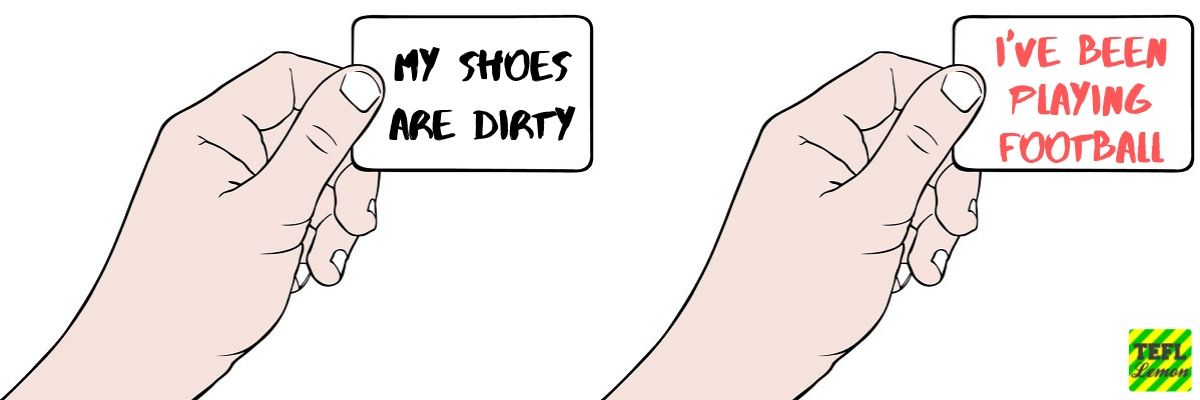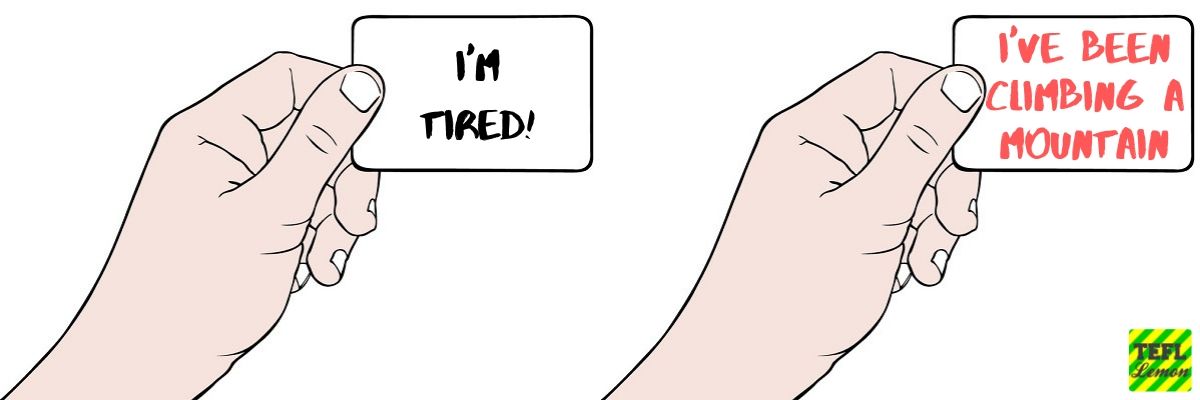Speaking Game to Practice the Present Perfect Continuous
A lot of English teachers avoid teaching grammar like the plague. They have the misconception that teaching grammar in English classes is boring for the students or will make a dull place to be. Worse still, many ESL teachers avoid teaching grammar because they aren’t 100% sure of the grammar structures themselves and so get out of tricky questions by not teaching it.
Learning English grammar the easy way makes it hard later
To be honest, I’ve been there. As a native-speaking English teacher, I learned English the easy way - being talked to by my mum and dad. I didn’t have to sit through English classes learning grammar structures, how they are formed and why they are used. So what often happens when native-speaking teachers start their TEFL teacher training? They can speak English fluently, but have no clue whatsoever what each grammar structure is called, why it is used and how it should be taught. The simple truth is that oftentimes, non-native speakers are better at teaching grammar, as they understand it better and were taught it themselves.
Teaching grammar needn’t be boring
Teaching grammar is important and something you should be doing regularly. I’ll explain in another article just why teaching grammar is necessary and shouldn’t be avoided. The main thing you need to know, though, is that teaching grammar needn’t be boring; in fact, teaching grammar can be absolutely fantastically fun! You can get some wonderful grammar activities going in your classes! Here is a grammar-based speaking activity which is perfect for your teens and adult classes to improve their oral fluency and accuracy.
The Present Perfect Continuous
The Present Perfect Continuous connects the ‘now’ with something which has happened in the past. It suggests that the action in the past was going on for sometime.
Some examples:
“They have been playing in the garden”
“We have been watching the movie”
“She has been flying this morning”
A game to practice the Present Perfect Continuous
This game can be played in your class to get your class using the Present Perfect Continuous tense. All you need are some blank cards (folded paper will do just as well if you don’t have cards). In this game, students will each have a card of something they were doing in the past. On the other side of the card, is what has happened as a result of what they did in the past. This is the very essence of the Present Perfect Continuous.
Before class, make one card for each student. Remember, on one side, write something your student did in the past and on the other side, write what has happened as a result. Below are three examples:
How to Play
Make one card for each student, ensuring that each card is different. You can make the verbs, nouns and adjectives on the card fit your class level.
Have a student come to the front of the class and give them a card. They show the side of the card which says what has happened ‘now’, for example, “my shoes are dirty”, “my jeans are wet”, “I’m tired!”.
The students in the class must try to think about why this has happened and what the student was doing previously. Ask your students to ask questions. For example, “were you walking in the forest?”.
Your students will be asking questions using the target structure. Give your class 5-6 goes at getting the correct answer. After five or six goes, the student holding the card tells everyone what they were doing in the past. At all times, your students will be using the Present Perfect Continuous tense in their speaking. They’ll also be hearing the Present Perfect Continuous being used by teachers and peers, which is excellent for the learning process and language acquisition.
Make sure everyone gets a go at being at the front. If your class is big, then you can simply divide the class into smaller groups.
A follow-up to this Present Perfect Continuous game for teens and adults
Once everyone has had a go. You can give each student a blank card and have them write their own. Get them to think of an activity they were doing in the past and what has happened as a result. After a few minutes, have all of your students either put in pairs or mingling in the middle of the class asking and answering about each others’ cards. They’ll all be using the Present Perfect Continuous tense with far more confidence and accuracy now! If there is no time for this follow-up, then you can do this as a grammar review for present perfect continuous in the next lesson.
Grammar teaching needn’t be boring and you can get wonderful and purposeful lessons from teaching grammar to teens and adults.
by Stuart Allen





